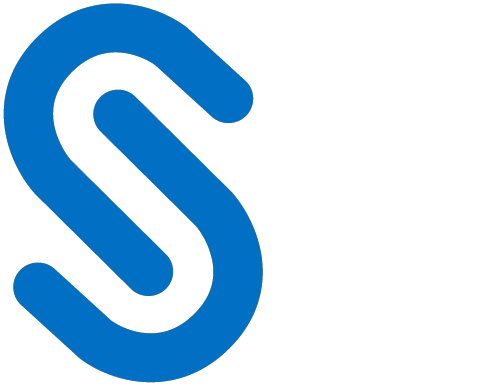Release Notes
Introduction
The release notes provide brief and high-level descriptions of the new features of HaloCAD. Before installing HaloCAD, it is recommended to read the release notes to understand any current limitations or bugs that may apply to this version of the software.
Product Description
HaloCAD acts as the guardian of your CAD files by automatically protecting them with Microsoft Purview Information Protection (MPIP) labels whenever they leave your secure IT perimeter. As a plug-in for CAD applications, HaloCAD offers access to MPIP-protected files, including label handling and privilege enforcement. CAD users will not notice any differences in the handling of CAD files because they take place in the background. By seamlessly attaching MPIP labels to the CAD files while they are being created, it provides end-to-end security for those files.
System Requirements
The following system requirements table specifies the minimum and recommended technical specifications, such as software and network resources, necessary to run the product.
Components | Details |
|---|---|
Supported Operating Systems | Windows 10, Windows 11, or above with updates installed. |
Supported file types |
|
Requirements
Supported Autodesk applications for HaloCAD Add-ons
You are reading the current version of the release notes; however, if you are searching for a previous version, refer to the release notes for that version.
CAD applications | HaloCAD Add-on version |
|---|---|
Revit 2023, 2024, 2025 | 2.1 |
Revit 2022, 2023, 2024 | 2.0 |
Revit 2020 | 1.1 |
Autodesk applications and HaloCAD Add-on version
Prerequisites
The following preparatory steps or conditions must be met before installing the product.
The add-on requires the registration of an application with Microsoft Entra ID, an Office 365 subscription, and access to recommended URLs. For additional information, please refer to the Technical Reference Manual.
Code Quality and Security
Secude focuses on software quality and security. This is accomplished by adhering to and exceeding best practices in development, testing, and quality control. Secude has chosen SonarQube as the first building block for building and implementing a robust continuous code quality assurance (QA). SonarQube is a platform for statical code analysis for continuous inspection of code quality. It performs automatic reviews of code to detect bugs, code smells, unit test coverage, and security issues in 29 programming languages.
SonarQube is utilized throughout the development process at Secude and only the highest marks are accepted for a product to be released. It helps to regulate code quality from the beginning of development, find and repair issues promptly, and improve overall software stability.
Each build report can be found under its relevant version heading in this release notes.
Reliability Rating
A = 0 Bugs
B = at least 1 Minor Bug
C = at least 1 Major Bug
D = at least 1 Critical Bug
E = at least 1 Blocker Bug
Security Rating
A = 0 Vulnerabilities
B = at least 1 Minor Vulnerability
C = at least 1 Major Vulnerability
D = at least 1 Critical Vulnerability
E = at least 1 Blocker Vulnerability
Security Review Rating
The Security Review Rating is a letter grade based on the percentage of Reviewed (Fixed or Safe) Security Hotspots.
A = >= 80%
B = >= 70% and <80%
C = >= 50% and <70%
D = >= 30% and <50%
E = < 30%
Maintainability Rating
A=0-0.05, B=0.06-0.1, C=0.11-0.20, D=0.21-0.5, E=0.51-1
The Maintainability Rating scale can be alternately stated by saying that if the outstanding remediation cost is:
<=5% of the time that has already gone into the application, the rating is A
between 6 to 10% the rating is a B
between 11 to 20% the rating is a C
between 21 to 50% the rating is a D
anything over 50% is an E
Build 2.1
New Features
This section lists the new features in the current release.
Implemented a new feature to include metadata (label only) into CAD files using the CAD SDK. HCADRVT-106
Support for Revit 2025.
Support for watermarking CAD files with MPIP labels, as well as 'label-only' MPIP labels that apply only metadata. HCADRVT-109, HCADRVT-107
Support for import/export file type STEP. HCADRVT-123
Improvements
There are no improvements to list for this release.
Fixed Issues
This section lists the fixed issues in the current release.
The option to deactivate the license (via the Deactivate button) has been removed from the HaloCAD About UI. HCADRVT-108
Fixed an issue that prevented the HaloCAD restriction pop-up from appearing when an unauthorized user opened a protected file. HCADRVT-57
Known Issues
This section lists the known issues in the current release.
While exporting a protected file using the Show Rendering Dialog option without export rights, the drawing gets saved as a black screen. HCADRVT-41
When exporting from a Revit file, a protected image file is exported with a
“.p"extension, such as.ppng,.pbmp,.ptif, or.pjpg. HCADRVT-85When a file is imported using the "Link PDF/ Import PDF" option, the Protected PDF file is not decrypted and appears as "Microsoft Azure Information Protection". HCADRVT-84
When attempting to use the "Insert->Import CAD" option to import protected OBJ and STL files into an unprotected Revit file, the HaloCAD least permission popup will not appear up and the protected file design will not be imported based on the least permission permissions. HCADRVT-127
When DKE files are available in recent documents and the DKE service is turned off, it takes longer to launch the Revit application and display the HaloCAD error restriction popup. HCADRVT-129
Quality Gate Report
Please see the table below for a list of SonarQube's key parameters for this version. Refer to the "Code Quality and Security" section for more information on rating definitions.
Metric | Value |
|---|---|
Coverage | 84.9% |
Maintainability Rating | A |
Reliability Rating | A |
Security Hotspots Reviewed | A |
Security Rating | A |
Quality Gate report
